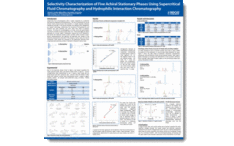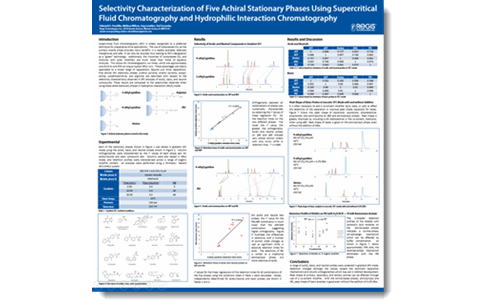 |
Supercritical fluid chromatography (SFC) is widely recognized as a preferred technique for preparative chiral applications. The use of compressed CO2 as the primary mobile phase provides many benefits: it is readily available, relatively inexpensive, and safe. It can also be recycled, thus leading to SFC's designation as a "green" technology. Additionally, the viscosities of compressed CO2 and mixtures with polar modifiers are much lower than those of aqueous mixtures. This allows for chromatographic run times, which are approximately one-third to one-fifth as long as typical HPLC runs. These advantages are clearly applicable to a broad range of separations, beyond just chiral separations. Five achiral SFC stationary phases (2-ethyl pyridine, 4-ethyl pyridine, propyl-amine, polyethylenimine, and arginine) are described with respect to the selectivity characteristics observed in SFC analyses of acidic, basic, and neutral compounds. These results are compared to the selectivities observed when using these same stationary phases in hydrophilic interaction (HILIC) mode. Download |

